I HAD to remind myself to play it cool as I prepared to chat with hot car legend, Greg Carlson. I can do this! I’m a 45 year-old professional, for goodness’ sake, with a number of car builds under my belt and even a SMOTY nomination to boot.
This article was first published in the April 2019 issue of Street Machine
But it was all to no avail. I bombarded Greg like a 1980s teenage fanboy; embarrassingly peppering him with questions, compliments and war stories of how his cars changed my life. Thankfully, Greg just took all of my loopy ravings in his stride.
I’m not alone in my feelings about the impact his builds made during the 1980s; Greg’s name is well known to many hot-car aficionados who share fond memories of this golden era of street machining.
He is best remembered for his ‘Blown Silly’ pairing – namely the chopped, blown black WB ute and jaw-dropping silver pro street VK Calais – and as one of the pioneers of this style of build, he helped change the direction of street machining in this country forever.
The VK Calais is the most famous of Greg’s Blown Silly builds. It featured a polished alloy interior along with the blown and injected SBC originally slotted in the ute. “It came down to the wire trying to finish it for the ’88 Summernats,” Greg says, “but we got it sorted just in the nick of time”
How did this all start for you?
It’s funny; I’d always liked cars but never thought I’d end up doing what I did! I devoured magazines as a young bloke and then had a mate who was a spray painter; we started playing with cars and it just snowballed – we formed the Super Street Machines car club in Brisbane in the early 1980s. It was a group of mates who just had an eye for building great cars, so the club had showstoppers from the word go. The saying we’d hear around the traps was: “If you could beat Greg Carlson, Wayne Pagel and Rob Beauchamp, you had it in the bag.” Others didn’t like the club and it seemed to really upset people, which was a side effect I’ve never understood. We were just friends doing our thing.
Greg’s VK started out as an accident-damaged, low-mileage Calais and quickly progressed to become a full-on pro streeter. Check out the date stamp on the engine fitment photo: 16/12/87. The boys had only a couple of weeks but still a long way to go to make Summernats ’88!
What style of car sparked your interest? Were there any particular cars that inspired you?
There were no specific builds that I can remember; I just loved clean, tough cars, and that it is what I’ve always strived to build. I think one of the reasons I won so many trophies is my obsession with attention to detail – I would spend countless hours detailing and refining everything until it was just perfect in my eyes. My son, Jack, is 15 and loves cars too, and I can already see that trait coming out in him. I think it’s in our Carlson DNA [laughs].
Greg’s first full-on build was an EH van powered by a 327 Chev. It was featured in Custom Vans & Trucks #19 back in 1981. It was a sign of things to come in terms of Greg’s obsession with engineering, detail and clean, crisp lines
My first memory of a Carlson build was your EH panel van – it was just mind-blowing to see a V8-powered EH on strict Queensland roads back then. Was that your first ‘proper’ project?
Pretty much, yes. I’d owned an FJ and a couple of FCs before that, but the EH took things to another level. I never worried about the laws and rules that much; I just built what I wanted, how I wanted it, so it scored a 327 Chev, fender wells, flared guards and even a shaker. Panel vans were the hot thing back then and I did well with the EH, but sold it on to finish an HQ van.
The first Mr Chev was Greg’s HQ panel van fitted with a WB Statesman front and running an SBC and Muncie combo. Highlights included the red velvet interior and those wild rear flares created to cover huge Dragway five-spokes
Ah yes! Your first ‘Mr Chev’ HQ with the wild flared guards and beautiful red velour interior; that was tough!
It had a brand new WB Statesman front and a big set of Dragway five-spokes all ’round, so was very competitive. I then stepped away from vans as the street machine scene started coming into its own. I built a second Mr Chev based on an HQ Statesman that had a 402-cube big block, four-speed and full-grille HZ front. That was sold to a guy on the Gold Coast, but I later heard it was stolen out of his shop; the thieves knocked down a Besser-block wall to pinch it!
With a 2in roof chop, wheel tubs, a blown SBC and extensive detailing throughout, the Blown Silly WB ute was one of a handful of cars to pioneer the pro street movement in Australia. Debuted in 1984 and rebuilt for the 1986 ’Nats, it was the cover star of SM’s Apr-May ’87 issue
Your WB ute was a knockout and had it all: blower, tubs and wheelie bars, and then there was the roof chop and amazing paint. The mix of styles was incredible!
I bought that as a new ute shell from Eagers Holden in Brisbane. I gave it a two-inch roof chop, then had wheel tubs fitted by Bill Jones at Weldwell Engineering. The first build ran a carbied, blown 350 Chev, Dragways and a WB Statesman front with a chromed stone tray. At the 1984 Street Machine Nationals in Canberra I won Best Engineered and Top Undercarriage/Driveline, and scored a $40 ticket from their local transport officers when driving it back to a mate’s place – they weren’t happy with the parachute and wheelie bars, but I got off pretty lightly [laughs].
This was the car that made me fall in love with Hurst Lightning Rod shifters. The revamp of that ute for the ’86 Nats is probably how it is best remembered; you pretty much rebuilt it all over again, didn’t you?
I bought that shifter back from the States and blew everyone’s minds [laughs]. Yes, I converted the engine in the ute to injection, fitted a set of Weld wheels and revamped the car from front to rear, smoothing and colour-changing the chassis and adding a heap of candy detailing. I had my own panel shop at the time – Greg’s Bodyworks at Woolloongabba in Brisbane – so was in the right game. I swapped the ute as a roller with Bill Jones as payment for the fab work on my VK Calais, and Bill later sold it on to Sydney.
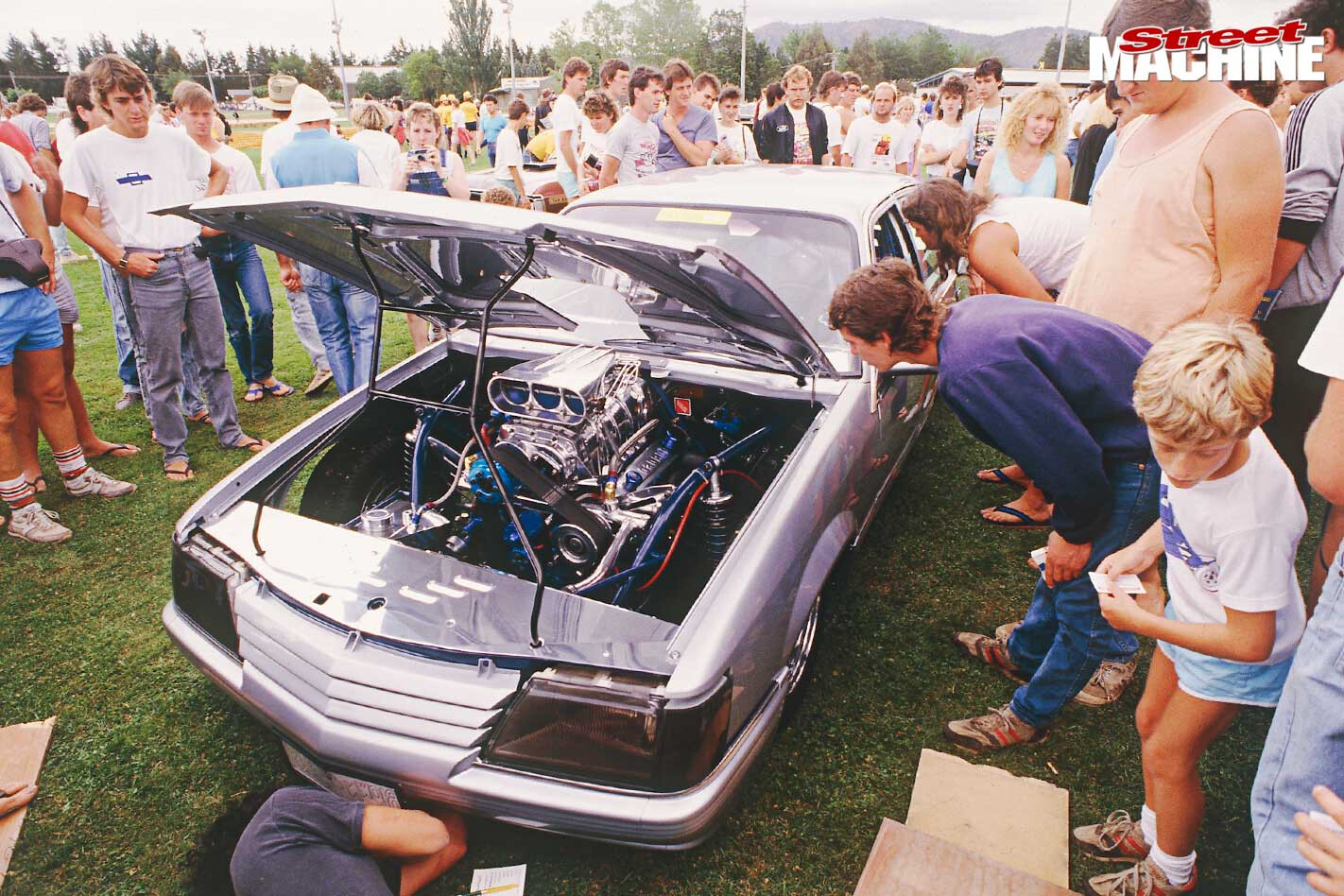
Your silver VK is still mindblowing now, and drew heavily on the US styles at the time. It was virtually a new car when you started that build.
It sure was; I bought a smashed VK Calais with less than 7000 kays on the clock and pretty much cut away the damage when I removed the old floorpan. I’d been to the States a few times and saw some amazing builds at the Car Craft Nationals – blown and tubbed drag cars were nothing new, but competition-style cars actually finished and detailed to show standards were unheard of to many here in Australia and it definitely was the start of a new era. It was a seriously mad rush to get it finished in time for the 1988 Summernats. I worked with Bill Jones and his sons on it after hours, and was still finishing last-minute jobs in the trailer during the trip to Canberra. It was crazy. I won a swag of awards including Top Street Competition, Top Engineered and Entrants’ Choice, but sadly never got to race it; I sold the car soon after, but had a ball driving it around Canberra during the ’Nats; my mate Phil Riley was following me with a box trailer loaded with 44-gallon drums of methanol!
Does it surprise you that more than 30 years later your WB ute and VK Calais are still remembered so fondly by people?
It’s a great feeling actually; it’s nice that they haven’t been forgotten, unlike so many other cars that have come and gone before and since then. The VK especially was so cutting-edge and right at the front of the pack – I mean it had a full aluminium interior, two motorbike calipers on each wheel and the rear axles were that short they would fit in a shoebox [laughs]. It was stuff you just didn’t see at car shows. It’s funny; speaking of those two cars, a few years after they were sold, a mate rang me from Sydney to say he’d just seen them racing each other at the drags! That was pretty cool and a little strange all at once.
State of Origin: It was hard not be a proud Queenslander in the 1980s with Brisbane locals like Greg, Rob Beauchamp and Wayne Pagel leading the pro street charge! What an epic line-up: Greg’s Blown Silly WB, Rob’s injected LX Torana and Wayne’s GAS69 HT Monaro became instant legends and are still lauded today. “We were all mates who helped each other build these cars, so there was no room for competitiveness or secrets,” Greg says
You’re best remembered for your Aussie builds, but I see you favour American iron nowadays – when did you make the switch?
It’s just what I like; I still love Australian cars like XY GTs and HK Monaros, but for some reason have just found myself gravitating towards the Yankee stuff. I went to the USA many years ago and brought back a ’68 Camaro, which I built from the ground up with a big-block and extensive detailing. I took that to the Camaro & Firebird Nationals in Narrabri many years ago – back when Chic Henry built his ‘jellybean’ Camaro actually – and cleaned up trophies for both the show and go side. I sold that to a mate and bought my current ’68 as a roller a decade ago; I’m hoping to have that at the Bright Rod Run later this year. My black 1967 Corvette is the last year for that Stingray shape and came from the factory loaded with options. It is just such a beautiful car to drive.
Greg’s second Mr Chev was a clean, white HQ Statesman sporting an ultra-cool full grille and running a 402ci big-block backed by a Hurst-shifted Muncie. The bonnet scoop and Appliance wire wheels firmly stamp its place in time. The car was later sold to someone on the Gold Coast before being stolen and sadly never heard of again
Is there anything you miss about the 1980s and your early years of building cars?
Cars came first back in those days, and it was the only way you could achieve everything you wanted to do – it was a time of great mates just buckling down and getting the job done. I’ve had a good life and done everything I’ve ever wanted to with cars, so I don’t really miss it, but am so glad I got to experience it. If you wanted to do something, you just went and did it.
Your Corvette and Camaro are both very cool builds. Do you have any other projects on the go?
Cars are built a lot different now, but I still prefer old-school raw grunt, not so much the turbos and nitrous. I lean more towards boats now for a horsepower kick and have a ski boat that runs a roller-cammed 454 with alloy heads that we’ve just repainted with five-layer graphics. I live five minutes from a boat ramp, so it’s easy to enjoy. I’m helping Jack with his first car too; it’s a VU Commodore we’re building in time for his licence, which will have neat paint and wheels. He’s a good kid; he looks through my old photo albums and is just gobsmacked, so it’s nice to be showing him the ropes and lending a hand.
Greg’s shed houses a ’68 Camaro and ’67 Corvette Stingray, flanked by memories of his early builds. “The Camaro runs a 468ci big-block and four-speed Muncie,” he says. “The Corvette has been kept original; it even has the factory FM radio!”
So are there any other cars on the Carlson dream list?
I’ve always had my heart set on a 1932 Ford hot rod, but am running out of space. I’d go a big-block of course, with sidepipes and huge tyres; it’d be super-tough. My brother Ken has the perfect chassis that I’m thinking about grabbing off him. He has his hands full with a Chevy C10 and Torana hatch, so I don’t think he’ll miss it. I reckon it’d make a great father-son project once the Commodore is done.
Chrome and polished alloy, along with candy apple red and gold paint detailing, were used throughout the WB build to really pop against the gloss-black exterior finish. The engineering side of the ute was first-class, proving that this build was more than just show (above and below).
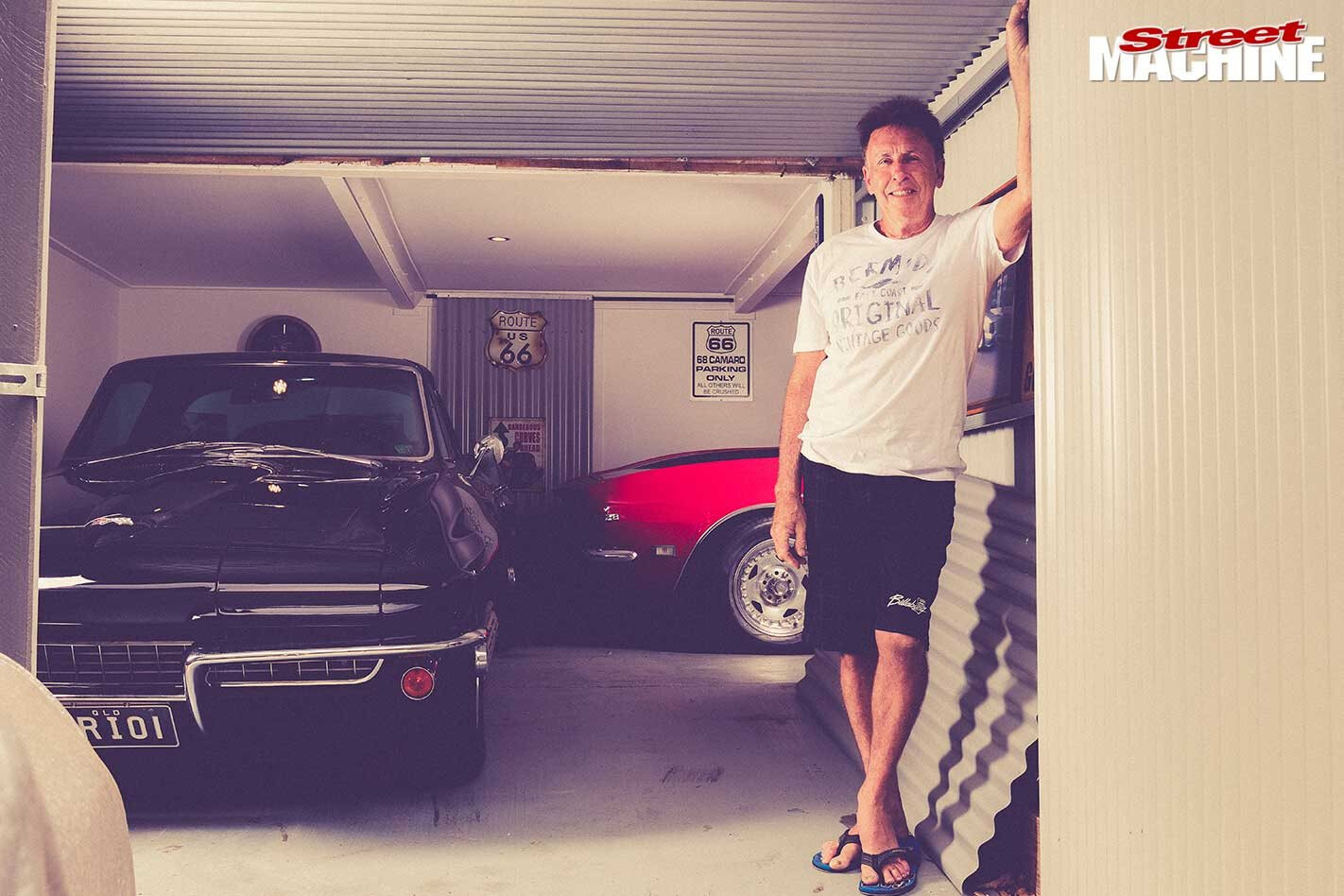
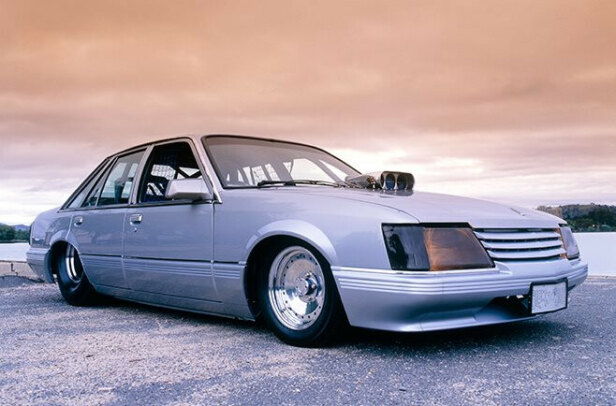
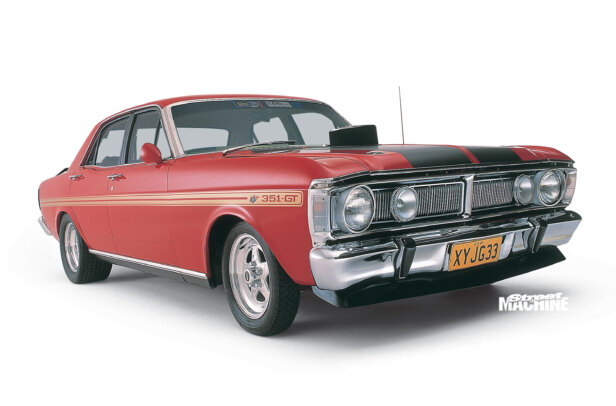
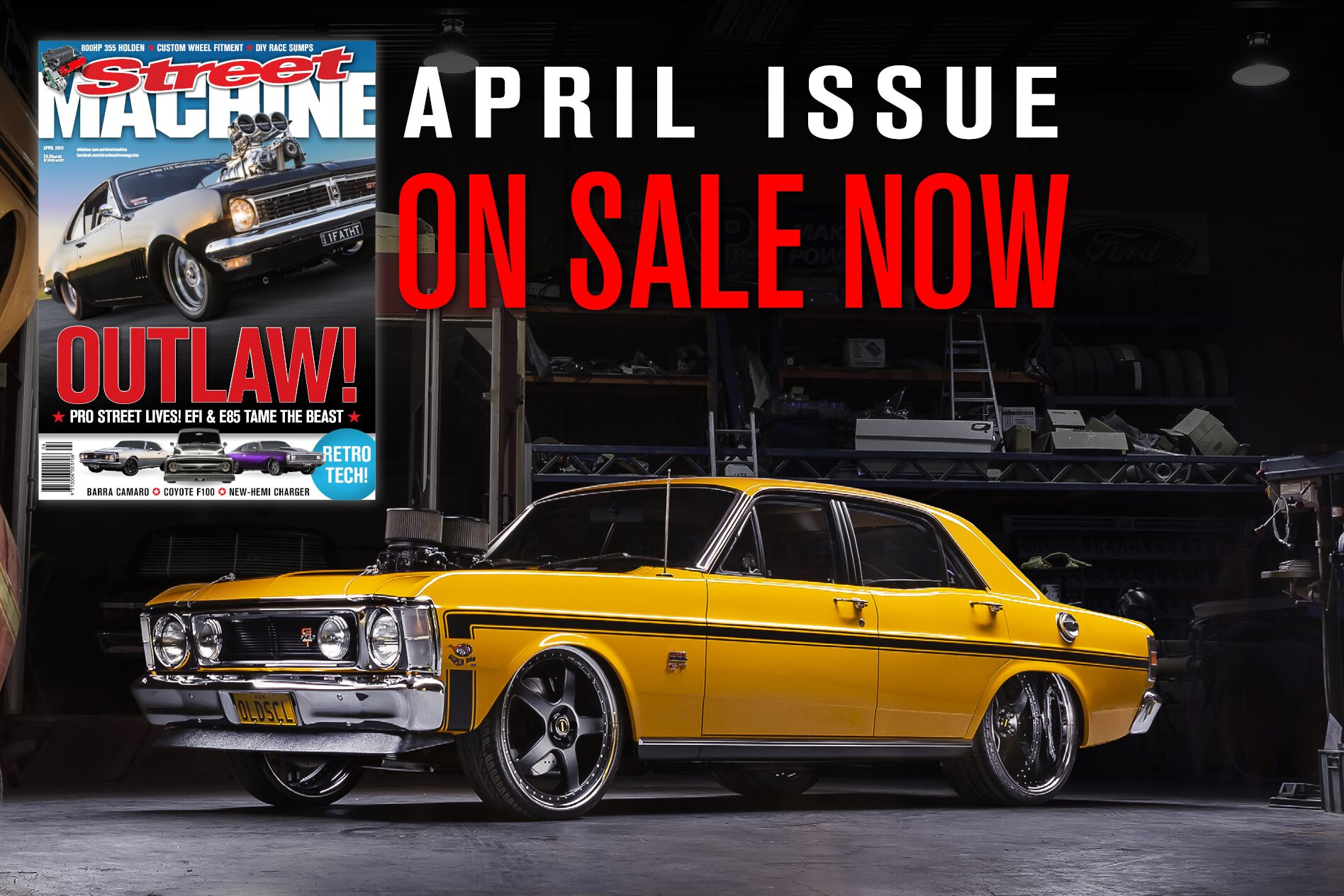
Comments